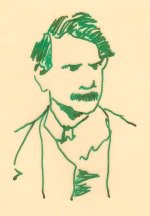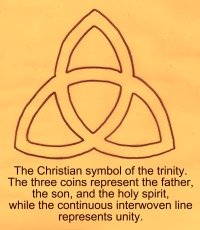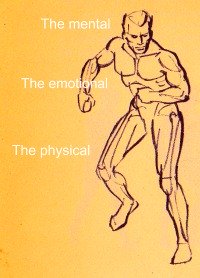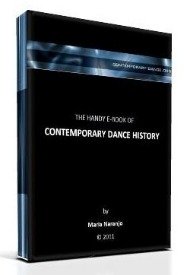FRANCOIS DELSARTE

"The object of art is to crystallize emotion into thought and then give it form." Francois Delsarte.
Francois Delsarte (1811 - 1871, France) is a commonly forgotten figure of the origins of modern and contemporary dance. This is maybe so because he was not a dancer himself and because his very first influences were spread over a wide audience of scenic arts performers like actors, singers or even preachers.
It is only through his students and later generations, that his ideas touch the dance field and gain him the title of one of the most important ideological founders of what would be called modern dance afterward.
Delsarte's short biography
He is born in a rural French area but is taken by his mother to Paris after his father’s death. Being there, he becomes orphan and leads a life of difficulties until a parish priest takes him in and guides him to take singing lessons.
History tells that he ends up loosing his voice and this situation pushes him to start searching for the causes of his disability. Not having found satisfactory answers by doctors or teachers, he starts developing an own theory about the connection between emotions and physical gestures.
In time, he achieves to define a codified system, becoming the first of an entire generation of thinkers who systematically analyses a topic about performing arts in a scientific way.
The core of his theory states that there is a connection between mental attitudes, emotions, physical postures and gestures. According to this, one’s emotional state would be communicated through one’s physical appearance and performance.
For example, the extension of the body would be in relationship with the feeling of self realization; the feeling of annihilation would translate into a bending of the body. Practicing those positions would reinforce the feelings they traduce and all emotions would have their own bodily translation (the gesture would reinforce them and at the same time they would reinforce the gesture).
This postulate coincides with the famous modern dance principle according to which the intensity of a feeling determines the intensity of a gesture, in opposition to the classical dance rule that makes use of codified gestures which are (presumably) not related to the mental state of the dancer.
“What we say is not what persuades but how we say it. The speech is inferior to the gesture because this last one corresponds to the phenomenon of the spirit. The gesture is the agent of heart, the persuasive agent. Sometimes 100 pages can not say what one sole gesture can express, because in that simple movement our whole being comes to the surface” (Translated quotation from: Alain Porte. Francois Delsarte, une anthologie, I.P.M.C., 1992).

The codification of the system of Francois Delsarte is organized under the omnipresence of what some historians call his ‘understanding of the Christian concept of the trinity’. It seems that he was strongly influenced by this ideological system and the thought of Saint Augustine, the medieval scholasticism and the Neo-Platonism.
So, his theory is full of classifications that are always divided into three categories:
-His system, called applied aesthetics, is divided in three parts: the statics, the dynamics and the semiotics.
-The body is divided in three zones: the physical, the emotional and the mental, which correspond to the inferior members, trunk and arms, and neck and head respectively.
-He states that there are three languages: the affective, transmitted through voice, the elliptic, expressed through gestures and the philosophical, traduced by the articulated word.
-Movement is of three orders: opposition, parallelism and succession, according to the intervention of the physical, emotional or mental part.
-Movement is of three categories: eccentric, concentric, and normal.
-There are three laws for movement (The laws of harmonic movement):
1. Law of the harmonic posture: there’s a need to obtain a balanced and natural attitude like the position of perfect rest in Greek statues.
2. Law of opposed movement: every movement of one or several parts of the body demands, for balance principles, an opposed movement of the rest of the segments.
3. Law of the harmonic muscular function or of the succession of contractions: the force of a muscular function must be in direct relationship with the size of the muscles. Therefore muscles should start from the big muscles that surround the pelvis.

There is an historical anecdote that explains his fame and recognition among the scientific fields of the time. It is said that he found out that on death, the thumb curls inward. This discovery enabled rescue teams in France to find survivors without wasting time and gain him, among other facts, the authority to even give a public conference at the medicine faculty of Paris in 1867.
Francois Delsarte had two pupils that became important for the spreading of his work: Steele MacKaye and Genevieve Stebbins. It is known that they are responsible for his indirect influences over famous modern dance figures like Ted Shawn, Isadora Duncan and even Rudolph Laban.
Here’s an example of G. Stebbins words: “different parts of the body express different emotions. To throw out the chest shows strength, power and energy in anything undertaken; the breast emphasizes the softer feelings and gives prominence to the lowest part of the body and shows the coarseness of the virago who, with her hands on her hips defies the neighborhood at large.”
MacKaye brought Delsarte’s teachings to the U.S.A. and spread them under the name of “harmonic gymnastics”. His success was enormous, to the point of having most of the women from liberal families following the trend. The practice even got a fashioned character and marketing clothes and products were sold under the system name.
For the puritan and strictly religious society of the America of the time, this meant a big opening. It is said that there was even a priest that affirmed that the ‘delsartisme’ would induce a religious culture and cultivate the spiritual perfection.
Meanwhile, Francois Delsarte was progressively forgotten in France and with time, his original teachings got so distorted and mechanized by the marketing culture in the U.S., that the system lost its reputation and vanished.
Return from Francois Delsarte to Modern Dance History
Return to Contemporary Dance Home Page
The handy e-book of CONTEMPORARY DANCE HISTORY:
The Dance Thinker is our occasional E-zine. Fill in the form below to receive it for free and join us.
Read:
"The Dance Thinker"
BACK ISSUES
Post contemporary dance announcements (workshops, auditions, performances, meetings and important news... it is free.)



